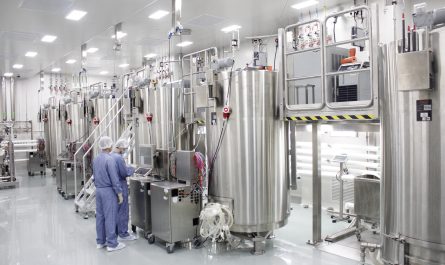
What are Remote Patient Monitoring Devices?
The rise of connected health technologies has paved the way for remote patient monitoring devices. These devices allow patients to monitor their vital signs and health information from the comfort of their own homes. Remote patient monitoring devices enable patients to transmit medical and physiological data like blood pressure, blood sugar levels, heart rate, oxygen saturation, weight, and more to healthcare providers through wireless connections. This allows providers to track patients’ conditions between office visits and intervene when needed for better health outcomes.
How do Remote Patient Monitoring Devices Work?
Remote patient monitoring devices are equipped with sensors that collect biometric readings and transmit the data to a central monitoring system either through cellular networks or through wireless connections like Bluetooth. The data is then sent securely to a cloud-based patient portal or electronic health record where it can be accessed by physicians and care teams. Caregivers are notified if readings are outside normal ranges so they can contact patients and take necessary actions. Patients also get alerts and reminders on their connected devices to take medications, monitor vitals at scheduled times, and more. This closed loop system enables real-time monitoring and management of chronic conditions.
Types of Remote Patient Monitoring Devices
Some common remote patient monitoring devices include:
– Blood Pressure Monitors: Wireless upper arm cuffs that can automatically transmit blood pressure and pulse readings to the care team on a scheduled basis.
– Glucose Monitors: Continuous glucose monitoring systems that track blood sugar levels in interstitial fluid under the skin. Readings are sent wirelessly to apps and portals.
– Scales: Smart scales that not only weigh patients but can also track other biometrics like body composition and send the data remotely.
-Pulse Oximeters: Fingertip devices that measure blood oxygen saturation levels and pulse rates and pair with apps.
-ECG/EKG Monitors: Patches or Holter monitors worn on the chest that record electrocardiograms over days and transmit results for arrhythmia detection.
-Thermometers: Wireless thermometers that take temporal scans or placement under the tongue and share temperature readings digitally.
-Respiratory Monitors: Devices worn on the chest or nose that track breathing patterns, airflow, and other lung function metrics.
Benefits of Remote Patient Monitoring
Remote patient monitoring has significant advantages for both patients and healthcare systems:
Improved Access to Care: It allows patients to receive medical care and monitoring from their homes, especially those in rural areas far from clinics. This improves access.
Early Detection: Continuous monitoring helps physicians identify small changes or deterioration in conditions early before they escalate into emergencies. This supports preventive care.
Reduced Hospital Admissions: Catching issues in advance through remote monitoring often prevents expensive hospitalizations and emergency room visits for exacerbations.
Better Chronic Disease Management: Conditions like diabetes, hypertension, heart failure etc. can be managed more effectively with real-time data on medication adherence and symptoms.
Improved Patient Outcomes: Studies show remote monitoring leads to better control of chronic diseases, fewer complications and hospital readmissions, and an overall improvement in health outcomes and quality of life for patients.
Cost Savings: The cost of remote patient care is much lower compared to in-person visits or readmissions. It helps reduce unnecessary healthcare spending.
Consumer Convenience: Patients find it more convenient to be monitored at home without disrupting their daily lives or needing someone to drive them to appointments.
Healthcare Challenges of Remote Patient Monitoring Devices
While remote patient monitoring provides significant benefits, there are also challenges to overcome:
Patient Engagement: Patients need to be actively engaged in self-monitoring and managing their conditions. Non-compliance can reduce effectiveness.
Tech Adoption: Ensuring patients efficiently use connected monitoring devices and digital portals requires proper training, technical support and user-friendly design.
Interoperability: Data from different devices may not always integrate seamlessly with provider EHRs due to lack of standards, creating workflow hassles.
Security & Privacy: Protecting personal health information transmitted wirelessly requires robust security protocols to prevent breaches and maintain privacy.
Reliability: Connectivity issues may cause gaps in data transmission on some occasions undermining continuity of care.
Physician Burden: Remote patient data can create information overload for physicians if not presented and prioritized properly for clinical value.
Cost Savings Validation: Long-term cost-benefit evidence is still evolving for payers to confidently reimburse remote monitoring programs.
Overcoming the challenges through continuous technology advancements, stakeholder collaboration, optimized care coordination, and outcome-based payment models can unlock the full promise of remote patient monitoring in healthcare. As connectivity and data management improve, these devices are set to transform care delivery for growing numbers of patients.
Conclusion
In summary, remote patient monitoring leverages digital health tools to extend medical supervision beyond traditional clinical settings. By enabling convenient at-home surveillance of vitals and symptoms, these connected devices support higher quality, lower cost and more accessible chronic illness management. With proactive efforts to address technology, workflow and reimbursement issues, remote monitoring shows immense potential to play a defining role in shaping healthcare delivery models of the future.


